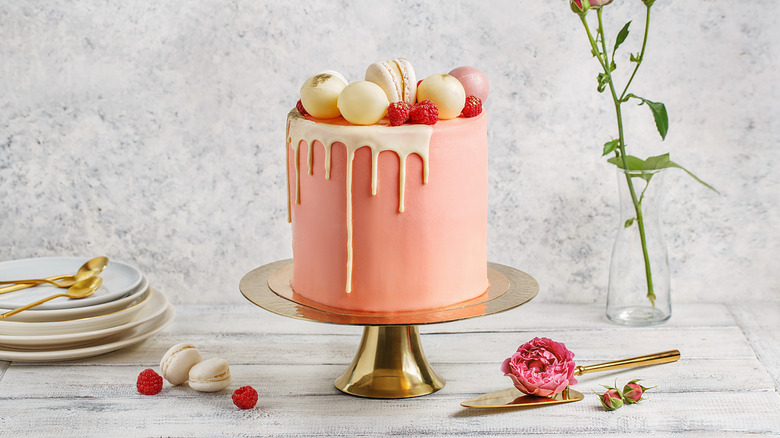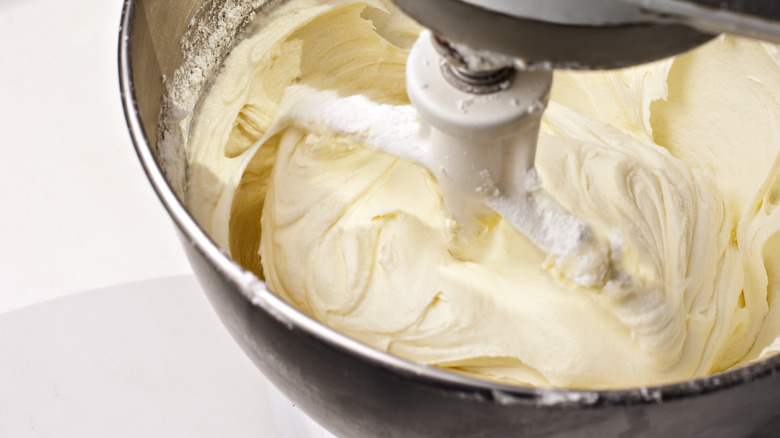Compact Buttercream Is Ideal For Tall Layer Cakes That Stand Strong
If your tall, single-tiered cake falls apart as soon as you step away from it, can we really call it a cake? In the world of cakes, those that don't stand strong long enough to be sliced just don't make the cut. Even a cake that tastes ridiculously delicious can hardly make up for its show-worthy collapse. The last thing you want is a wobbly, half-steady cake that topples even when slightly nudged.
What you need is, in fact, compact buttercream. This less smooth but thicker version of buttercream may be the flawlessly finished frosting you often see covering birthday cakes. Nor will it be the beautifully beaten buttercream piped atop big cakes. Compact buttercream works behind the scenes as the glue that holds cake layers together. The lavish-looking frosting you love to see wouldn't be the life of the birthday party if not for the firmer buttercream underneath.
To make compact buttercream, simply follow the steps to make regular meringue buttercream. Make a meringue mixture using raw egg whites and sugar and gradually add butter to it. Then, mix using a whisk attachment until just combined, then stop the mixer. Go on to switch the whisk for the paddle attachment and continue to mix on low speed. This helps the buttercream to become thicker and, therefore, strong enough for any cake to maintain its structural integrity. Once the mixture reaches an even consistency, your compact buttercream is ready.
Why you need compact buttercream
Tall, multi-layered cakes are often filled with ganache, pastry cream, whipped cream, or other soft fillings. Such fillings, though they hold the layers together, are prone to seep out past the cake edges. To secure the filling, you can pipe compact buttercream inside the outer edges of each layer. This creates a barrier that secures the filling and lends beautiful height to the cake's structure.
Compact buttercream is also the answer to coloring your icing. Depending on the amount of food coloring added, there's a chance of altering the buttercream's texture. The challenge becomes greater when trying to achieve darker colors such as navy blue, red, or black. Since you may need to add a generous amount of food coloring, starting with a medium-consistency frosting like compact buttercream is ideal. Its texture is not too soft or over whipped compare to thinner buttercreams, thus it may accommodate more coloring without altering its consistency.
Overall, a less soft buttercream is the best option if you prefer your cake to stand steady and firm. You shouldn't have to count the seconds before your cake collapses. After putting in the effort to bake it perfectly, you might as well finish the job with a buttercream that'll see it stand strong, and our vote is on compact buttercream.

